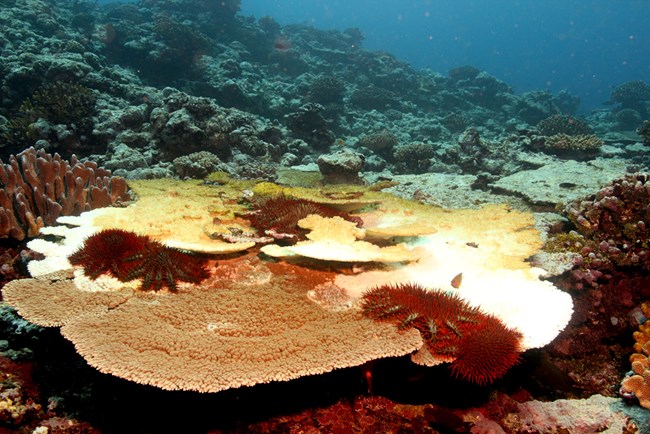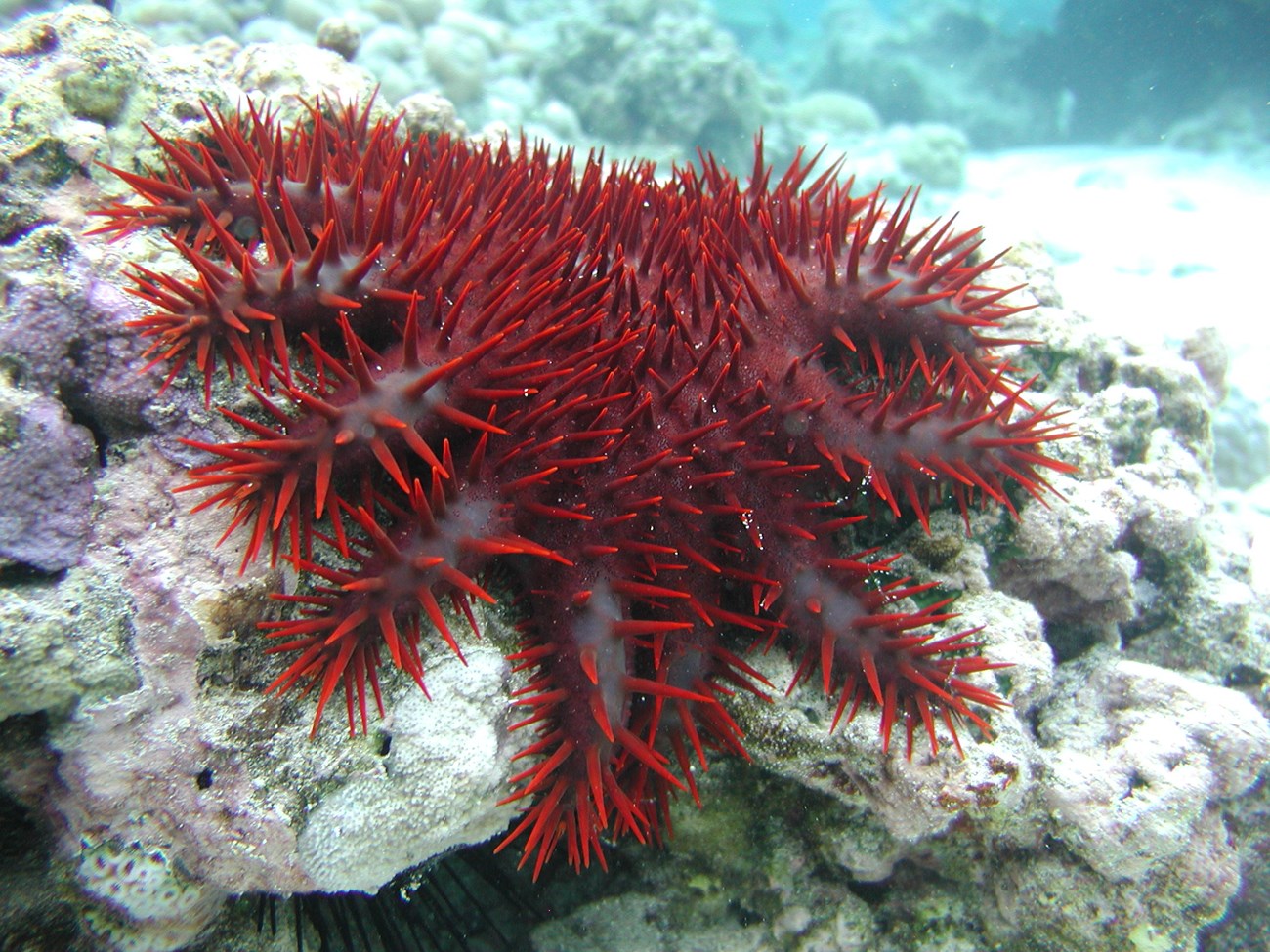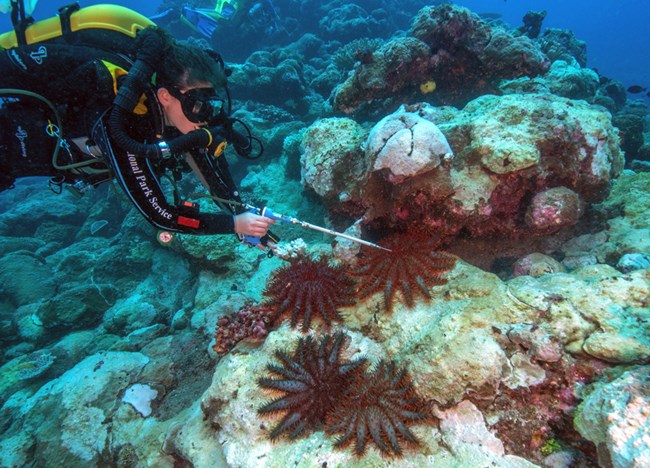Last updated: April 23, 2018
Article
Crown of Thorns Starfish Wreak Havoc in National Park of American Samoa

Corallivore
Found throughout the Indo-Pacific the crown of thorns starfish, Acanthaster planci is one of the largest sea stars in the world (up to 45 cm across). Unlike the typical starfish with five arms, the crown of thorns starfish is disc-shaped with multiple arms (up to 21) covered in poisonous spines. These unique features gave rise to this starfish's commonly referred to name of the crown of thorns.
Acanthaster planci is a corallivore, which means that it feeds on live coral tissue. After climbing on a coral colony, the crown of thorns starfish extrudes its stomach out through its mouth and spreads it over the surface of the corals. The stomach secretes digestive enzymes that liquefy the coral tissue which is then absorbed. After this process, the coral colony is left devoid of living tissue and only the white skeletons of the colony remain. On the skeletons, the starfish leave behind observable feeding scars which mark the paths of their destruction. Without the living tissue, the skeletons become more vulnerable and brittle, and are often colonized by non-reef building organism such as algae.
Known as voracious predators, a single crown of thorns starfish can consume approximately 6-10 square meters of living reef per year. Low densities of Acanthaster planci naturally occur on reefs with little impact to the ecosystem. However, under certain conditions periodic population explosions of these starfish can occur on reefs, generating alarm due to the extensive damage they can unleash to the corals and the reef ecosystem.

Acanthaster planci has been documented as moving up to 35 cm/minute, thus in short period of time a large amount of damage can be done. Envision a dinner plate size worth of damage to the reef by each starfish each day.
A study in the Central Great Barrier Reef region documented large crown of thorns starfish (40 cm and greater) decimating live coral at a rate of 161 cm²/day in winter and 357–478 cm²/day in summer.
In addition to being a fast eater, the crown of thorns starfish can also be a picky one, having innate preferences for certain coral species over others. Corals species from the genera Acropora and Pocillopora are their preferred foods. Controlled laboratory studies have shown preferences even within the genus Acropora with the most preferred species being Acropora hyacinthus, followed by A. gemmifera, A. nasuta, and A. formosa. However, when food becomes limited, the crown of thorns starfish is known to eat all species of hard coral, and then start eating the soft corals.

Unfortunately, the National Park of American Samoa (NPSA) is experiencing an ongoing outbreak of this hungry corallivore. Luckily, the park and the Pacific Island Network Inventory & Monitoring Program (I&M) have been monitoring the benthic marine community in NPSA as a "Vital Sign" since 2007. Site specific reef data on the coral species are included as a part of the benthic marine community monitoring protocol. By knowing which reefs have the crown of thorn's preferred food species (e.g., species from the genera Acropora and Pocillopora), park managers can better identify reef sites for culling and removal of this starfish. Geo-referenced maps of monitored reefs showing coral cover and species were rapidly provided by I&M to NPSA to help the park prioritize their efforts (see photo caption below).
Marine Ecologist, Dr. Tim Clark, has estimated that 6,433 crown of thorns starfish have already been removed from several sites across Tutuila Island. But there is much work left to do.
This is an excellent example of employing long-term monitoring data to inform efficient management action for one of our most precious natural resources.
– Sheila A. McKenna, NPS Marine Biologist, 2014
For More Information
Pacific Island Inventory & Monitoring Network
Inventory & Monitoring at National Park of American Samoa
Download PDF from the Data Store
